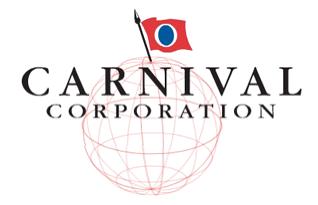
Environmental Factors
The financial analysis takes into consideration the external and internal environment. We believe that this assessment is critical to the strategic management plan as well as Carnival's current financial status. Key external and internal environmental factors that impact the financial analysis include the following as noted below. Please note also in each category the potential opportunities.
External Environment (Societal)
Sociocultural factors include safety concerns regarding terrorism stemming from the 9/11 event and rumors of war. Two other key factors in this area are the increasing affluence of Americans and the increased participation of women in the workplace, which give families more disposable income for discretionary items like vacations. These factors affect the cruise industry by making cruises more acceptable as �family-type� vacations. Another key trend that will positively impact the cruise industry is the aging population since "prime crusing ages" are between 40 and 60..
Key economic trends that exist and have great potential to impact the future of the cruise industry include the global economic slowdown in the last three years. The rising unemployment rate and higher fuel prices may adversely impact the cruise industry. However, there is opportunity for Carnival to leverage this weakness in the economy by continuing to offer the segments of the market impacted by the economy affordable vacations and also leveraging those targets markets that have not been impacted by the economic slowdown.
The technological impact on commerce has increased the efficiency of cruise travel, bookings, and has the opportunity to assist in joint venture activities and improve the ease of travel as compared to the competitors.
The political instability in some destination points poses moderate threat; however, this can be controlled by strategic economic alliances with destination governments. In addition, this provides an opportunity to explore destinations that have not been utilized in the past.
Internal Environment (Task/Industry)
Threat of Entry. There are significant large players in the cruise industry. However, large entertainment and recreational parks have started to see the value of associating with the cruise experience. Industry consolidation through mergers and buyouts, and the expansion of the industry may negatively impact the profitability of this industry. The opportunity in the North American market is substantial where only 5%-7% of the population have taken a cruise. Another opportunity is the Asia/Pacific market where income levels are increasing and there are new destinations to explore. The cost of entry is high given the initial investment; therefore, those entering the cruise industry must have the financial power.
Power of Suppliers. Carnival owns all of its destination points and controls their supply needs. Another key strength is that Carnival has a variety cruise lines to meet most budgets. This allows them to capture a good cross-section of the population. They have established a good relationship with travel agencies because they can merchandise its affordability. 99% of all Carnival cruises are sold through travel agents. There are some opportunities that Carnival may explore to achieve greater profit margins. For example, strategic alliances, joint ventures, etc. with oil/gas suppliers, commodity suppliers, amusement or entertainment parks, or creative �cruise experience� enhancers.
Power of Customers. Carnival earns its revenues primarily from the sales of passenger cruise tickets. The ticket price includes accommodations, meals and most on board activities. Additional revenue is generated from the sale of air transportation to and from the cruise ships and the sale of goods and services sold on-board. These goods and services include casino gaming, bar sales, gift shop sales, photograph sales, shore excursions, and spa services.
Carnival owns and operates six cruise lines under the brand name of Carnival Cruise Lines that allow them to focus on specific customer markets. The cruise lines include: Carnival, Costa Cruises, Cunard Line, Holland America Line, Seabourn Cruise Line and Windstar Cruises.
The rivalry is high among the big players which include: Celebrity Cruises, Disney Cruise Lines, Norwegian Cruise Lines, Princess Cruises (purchase pending by Carnival), Radisson Seven Seas, Renaissance and Royal Caribbean, American Hawaii Cruises and Club Med.